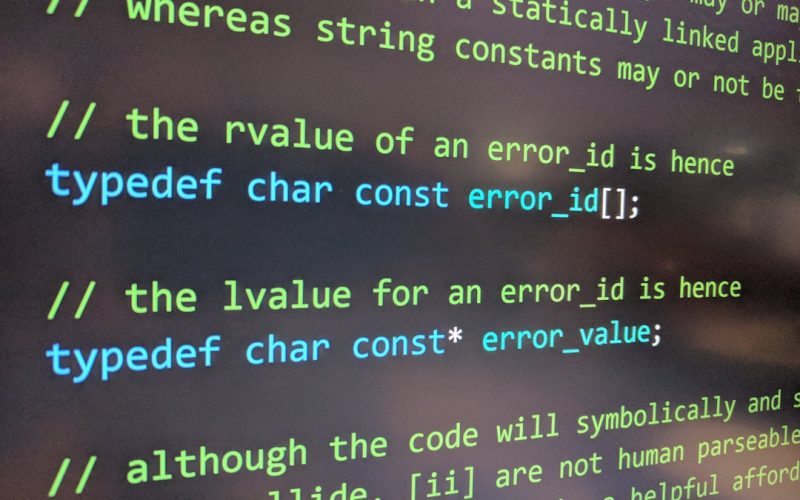There are two approaches to solving a problem. One is to analyse it carefully and develop a comprehensive plan, while the other is to act on instinct and work as you go. Both of these methods can be effective in different circumstances.
When it comes to constructing a website, there are two options to consider – a static HTML website or a Content Management System (CMS) like WordPress or Joomla. Many novice webmasters may be asking what the major distinction between these approaches is. Even though they both create websites, the way of achieving the final product varies greatly. Read on to discover the difference between them and which one could be better suited for your needs.
HTML, CSS, and JavaScript are all essential components of website creation. These languages enable developers to create and style the functions of a website. With HTML, content, structure and layout can be structured; CSS shapes the presentation of this content; while JavaScript provides interactive elements and effects.
A static HTML website is one that you construct using HTML and CSS. The reason why this type of website is referred to as static, is because the content cannot be changed or altered – at least not without manually amending the code. For many years this was the only way to build and maintain a website. This style of page does not feature dynamic content or user interaction, all elements are locked-in as soon as you enter them into the HTML. What does this mean? Simply put, once your design is completed and uploaded it will only display what you told it to. Despite its restricted features, static HTML websites are still capable of presenting beautiful designs with ample opportunities for users to read content, buy products, access free offers, sign up for newsletters, and even build a list. In short there’s no limit to what can be done with a static HTML website.
When building an HTML website, you’ll utilize several coding languages. HTML provides the structure and CSS the visuals; colors, fonts, background, etc. Additionally, JavaScript can be used to add animation or dynamic user interaction. Understanding the basics of each of these languages is a must for this route.
A Content Management System (CMS) is convenient to use as it doesn’t require any coding knowledge. It can be operated with a “drag and drop” or “point and click” interface in the admin section, allowing you to make the desired changes quickly and easily. The effects are seen instantly after saving and updating. Moreover, there’s a wide range of themes readily available for customization – more about this will be discussed later.
Most CMS sites are often referred to as Blogs, due to the fact that this was their primary purpose in the past. However, they have evolved over time and become one of the most commonly used programs for creating websites. Utilizing PHP, CMS sites can store all their content in a database which means that dynamic content can be changed rapidly with no coding knowledge necessary.
Which content management system should you choose? Should it be WordPress or Joomla?
This is truly a matter of preference. Both platforms are very easy to use, so deciding between them comes down to what unique features they have. WordPress has been around since 2003 and is incredibly popular, getting a lot of programmer support for Plugins and SEO. It also boasts an extensive library of themes, appealing to both beginners and professionals alike. Joomla was created in 2005 and enjoys almost as much popularity with over 30 million downloads, made even better by its WordPress integration. Users can leave comments on posts or pages, stream content from social media or other news sites, and quickly create posts thanks to built-in templates that automatically update the navigation bar and page structure.
It’s important to consider both the pros and cons of a decision. To ensure you make the best choice, it is wise to examine the advantages and drawbacks of any decision you are faced with.
Static HTML websites are simple to create, especially if you’re familiar with coding. You have full control over the appearance and design of your website. Furthermore, HTML sites generally load quickly because of the fewer number of files and data that need to be downloaded. As previously noted, one of the main advantages of HTML is having complete power over the look and feel of your site. WordPress and Joomla may enable some customisation too, but they limit you to certain choices provided by the template or theme you use. If you understand CSS (a rather uncomplicated language), then it’s effortless to modify the visual aspect of a website created in HTML code.
Static HTML can be quite rigid. It has a complex structure with larger websites, as all its content is coded by default. This means that if you create a Web page containing an article, that’s all you will have on the page. There won’t be any user-generated content, dynamic content generated while you’re away or anything else; the website will remain static. However, when databases and shopping carts come into play then users are given a limited form of interactivity; they can access information and purchase products or services being offered on the site.
If you’re planning on making changes to your website such as adding new posts or pages, you will need to create the page and upload the HTML file to your server. This could get very time consuming if you’re adding a page each day. The process may also become quite a challenge if the CSS structure isn’t in place already. For example, if you want to change the background color of all pages at once, with an effective CSS structure what you’d need to do is just update the CSS – this is extremely helpful for websites with many pages. It’s simple for someone who knows how to code but more complicated for those less familiar with code. To make matters worse, it has also got be taken into account that SEO needs to be coded into static websites by hand – it’s a dynamic process, requiring ongoing tweaks and changes in order to make sure everything remains up-to-date.
WordPress is renowned for being an easy to use and straightforward platform for setting up a website. In comparison to creating a website from scratch with HTML, CSS and JavaScript, setting up a WordPress blog requires significantly less time – generally just a few minutes. Even when factoring in additional time needed to customize the look and feel of the website through selecting a pre-built theme, it would still be a fraction of what is involved in writing code from scratch. This is why WordPress is so popular – it’s quick and easy for novices yet offers sufficient flexibility for more experienced web developers.
Let’s discuss themes or templates quickly. These allow you to instantly alter the look or feel of your website. If you’re looking for a certain design, like, say, a medical-style or something golf-related, there are copious options available – some free and others premium. For a basic blog site with the ability to leave comments, a free template should do the job. But if you want a more sophisticated outcome such as an online store with a shopping cart or an Amazon affiliate programme data feed, then I’d definitely recommend investing in a premium theme as they normally offer more flexibility for customisation.
WordPress offers a major advantage with its built-in SEO. The setup process begins in the admin section, under settings > general settings. Once completed, each time you compose a post or page you can add to your SEO and keep it current while being friendly to search engines. Several top-notch plugins can take your SEO even higher.
Speaking of plugins, you have a wealth of options to add interesting effects to your WordPress website. We can only give you a small snapshot of what’s available: from advertising and SEO to article submission, spam protection, captchas, contact forms, email campaigns and automatic backups. The choices are practically endless!
Working with WordPress can be challenging due to its plugins and selection of themes. If you have too many plugins installed, it may lead to slow loading times on your website. To avoid this issue, only add the ones you need. You can further customize your site by selecting a well-reviewed theme that offers customization freedom and is easy to understand and use. Consider reviewing the theme before investing in it, as it should be visually pleasing and quick to load. With thousands of themes available, you are sure to find one you like.
Setting up your WordPress website is a straightforward process. You begin by configuring the software, then move on to installing, followed by the installation of plugins and themes.
Using a web host like GoDaddy makes setting up a WordPress site a breeze. With powerful customer service that includes phone support provided by actual human beings, it’s clear why I’m such a fan. However, there are many reputable web hosting companies out there and ultimately it’s your decision as to which you feel more comfortable with.
Next, log in to your web host and accept their instructions for installing WordPress. Subsequently, upload and install the theme of your choice. Once the server gives confirmation that the website is up and running, it’s time to start personalizing the site – adding content and customizing it to make it exactly as you wish.
In conclusion, we can safely say that this has been an informative and enjoyable day. We have looked at the various options available to us, discussed them in depth and made a decision. The knowledge gained from this experience will undoubtedly prove to be invaluable going forward.
Two widely used approaches to website creation are static HTML and WordPress. Static HTML is great for small sites, or bigger projects if you have the programming skills. For pages that require frequent updates or new content added regularly, WordPress is the go-to option due to its simplicity and need for minimal or no programming. Though both can get the job done, WordPress is typically preferred because it offers greater capabilities than HTML with no coding proficiency needed. Consider your requirements, and you can easily determine which method will be best for you.



